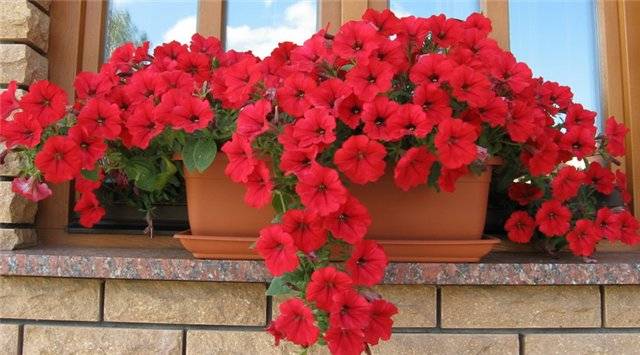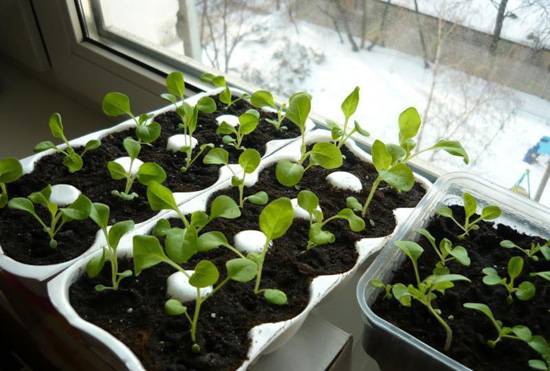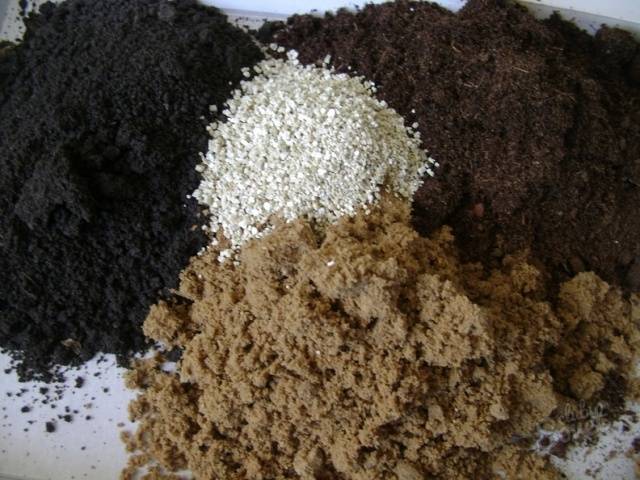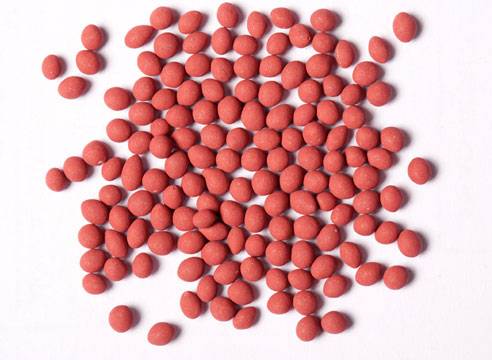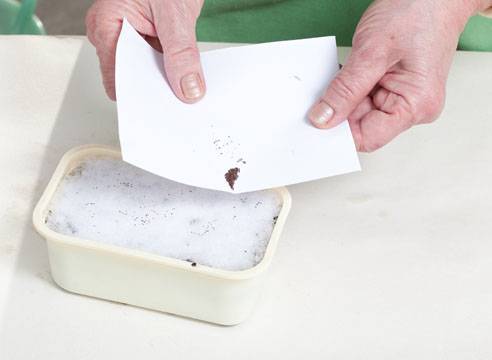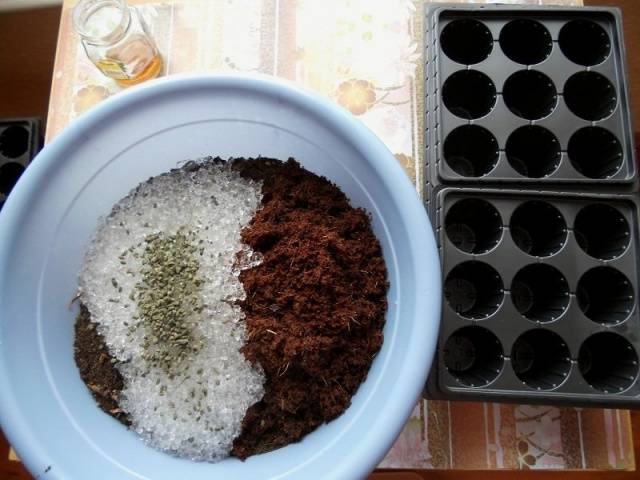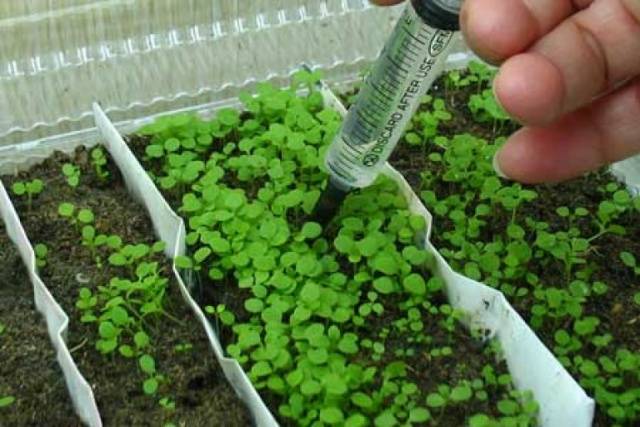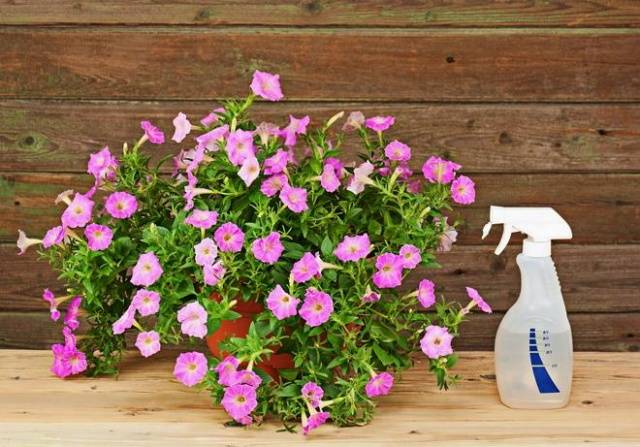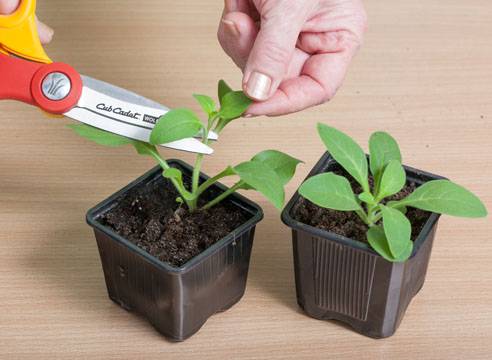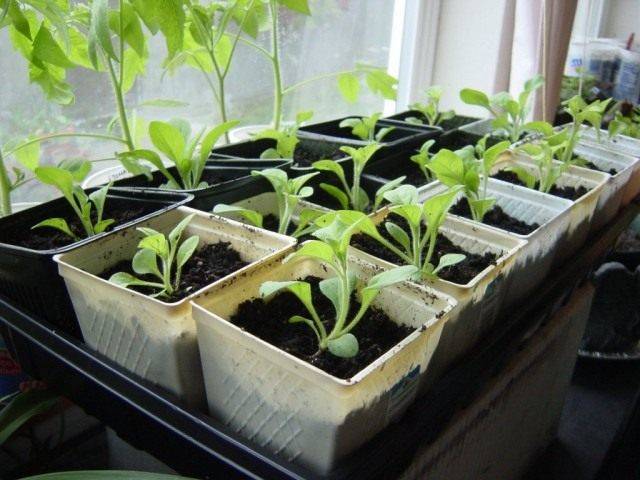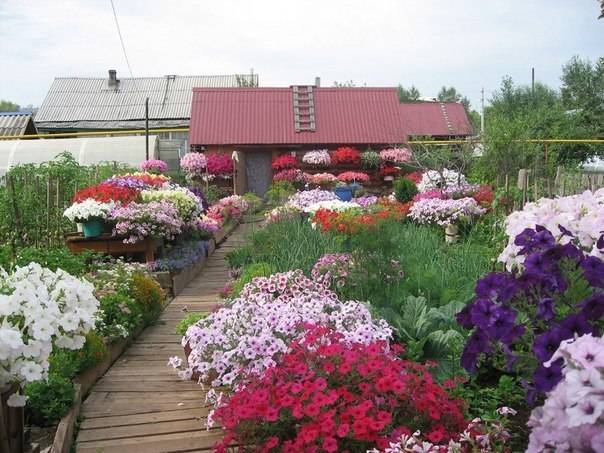Content
Petunia is an excellent representative of herbaceous perennials from the nightshade family. The hot tropics of Brazil, Argentina, Bolivia and Uruguay became its historical homeland. But thanks to the active cultivation that began in the 18th century petunias, the beauty of this flower has become available to us. This beautiful flower is actively planted not only in summer cottages, but also on the balconies of city apartments. All that is needed for this is seedlings, either purchased or grown independently. In this article, we will talk about how to grow petunia seedlings at home.
Benefits of self-grown petunia seedlings
Many gardeners, especially beginners, are constantly faced with a dilemma: buy ready-made seedlings or grow them yourself. Purchased seedlings can save the grower a lot of hassle, but only if they are purchased from reputable quality growers. Its cost, as a rule, will be several times higher than ordinary seedlings. But the seedlings of petunias, which are sold at every step, not only will not save the gardener from the hassle, but will also add new ones. Such seedlings can have a dying root system, suffer from chlorosis, or be affected by various pests. Therefore, if it is not possible to buy high-quality seedlings, then it is better to grow them yourself.
Growing petunia seedlings at home will have the following advantages over purchased seedlings:
- the ability to plant the desired variety, and not buy the one that will be;
- self-grown seedlings will cost less than purchased high quality seedlings;
- home seedlings will be protected from various pests that may be in purchased seedlings.
Therefore, they should be bought only from trusted producers, paying attention to the expiration date of the seeds.
When to plant petunia seeds
The beginning of flowering of a petunia directly depends on when its seeds were planted on seedlings. For early flowering in early June, petunia should be planted for seedlings in late February - early March. At the same time, the location of the apartment and the presence of additional lighting will play a decisive role in choosing the time for planting petunia seeds:
- if the windows are directed to the south side, then you can plant in early March;
- if the windows are directed to the north side, then disembarkation should be made in the horse of March or at the beginning of April;
- if the gardener has fluorescent lamps, then petunia can be planted at the end of February.
Lunar gardeners should avoid full and new moon days when planting petunia seeds. Seeds will germinate rather poorly these days. But the days when the moon is in Pisces, Scorpio or Cancer are considered the best for planting this flower.
Rules for growing seedlings from seeds
At home, petunia seedlings are not as difficult to obtain as it seems to many gardeners. In order to petunia seeds sprouted well, and young seedlings developed normally, it will be enough to adhere to simple rules of care.
Priming
Petunia is very fond of neutral or slightly acidic soil.It should be nutritious and loose enough to retain moisture without blocking. Self-cooking is ideal. soil for seedlings... For this, the gardener can use the following recipes:
- two parts of sod land, humus, peat and one part of sand;
- one part of garden land, sand and two parts of peat.
After mixing all the components, the finished soil must be sieved first through a coarse sieve and then through a fine sieve and treated with a strong solution of potassium permanganate.
Petunia seedlings at home can also be grown in a ready-made mixture. But you will definitely need to add wood ash, perlite and potassium sulfate to it.
Sowing seeds
The lion's share of success in growing petunia seedlings at home lies in high-quality seeds. For this purpose, it is worth using only high-quality seeds. Also, an important factor affecting the germination of seeds is their shelf life. The older the petunia seeds are, the less chance they will germinate.
Petunia seeds must be processed before planting. This will help increase their germination and affect the future immunity of young seedlings. Presowing preparation of petunia seeds consists in soaking them for 3-6 hours in a weak solution of potassium permanganate.
These "dragees" are a nutritious shell necessary for better seed germination. Such seeds should not be soaked in potassium permanganate, and they should only be planted in moist soil. Otherwise, the "dragee" will not dissolve and the seed will not germinate.
There are several ways to plant the seeds of this flower for seedlings:
- normal fit;
- planting in peat tablets;
- landing in separate plastic cassettes with cells.
Let's go through each of these methods in more detail.
Regular fit
In a normal planting, a clean container made of wood or plastic with a height of more than 10 centimeters is taken for petunia seedlings. In order for the water in the container not to stagnate at its bottom, there should be drainage holes, which should be covered with fine expanded clay or foam. After the drainage layer, there is disinfected soil. Pour it so that about 2 cm remains to the edge of the container.
When the container with soil is ready, you can start planting itself. To do this, the top layer of soil must be slightly moistened with a spray bottle and evenly sprinkled with small petunia seeds. After that, the soil is sprayed again from a spray bottle and tightly closed with polyethylene or glass.
If there is still snow on the street while planting the seeds, then the seeds should be sown directly into it. For such a landing, only clean snow is suitable, without traces of reagents. It must be laid in an even layer on the ground and lightly tamped. After that, seeds are scattered on it and covered with polyethylene or glass. It is not worth deepening the seeds, because when the snow melts, the seeds, along with the melt water, will be drawn into the ground.
To obtain fast and friendly shoots, the container with seeds must be placed in a very bright place at a temperature of at least +25 degrees.
Planting in peat tablets
It is recommended to plant only nutrient-coated seeds in peat tablets. With this planting method, one seed is planted in each tablet. Due to such a single planting, the gardener gets rid of the need for a pick, which injures the root system of petunia seedlings. In addition, planting petunias in peat tablets has another indisputable plus - it is easy to determine by the color of the tablet whether the petunia seedlings need watering or not. The lighter the tablet is, the less moisture it contains, and vice versa.
For cultivation, it is worth choosing medium-sized tablets with a diameter of 3.5 to 4.5 cm.Before planting seeds, peat tablets must first be soaked in water until they swell. After that, drain the excess water and place the tablets in a container with at least 10 cm edges. Now you can plant seeds. To do this, put one seed for each tablet.
After all the petunia seeds are planted, the container with peat tablets is covered with polyethylene or glass and placed in a bright place at a temperature above +25 degrees.
Landing in separate plastic cassettes with cells
This method combines the advantages of conventional planting and cultivation in peat tablets. Such plastic cassettes with cells can be used for more than one year. Their cost is low, they perfectly save space and allow you to skip the procedure for picking young seedlings. There are many different options for such cassettes on sale, but cassettes with large cells with a height of at least 10 cm are more suitable for petunias.
The preparation of such cassettes for petunia seedlings does not differ from the usual method of planting: first there is a shallow drainage, then the earth. If there is still snow on the street, then you can use it. After the containers are ready, you can start planting. To do this, put one seed in each cell, cover them with polyethylene or glass and put in a bright place at a temperature above +25 degrees.
Seedling care
Temperature conditions are very important for petunia seedlings. At temperatures below +25, they do not germinate, and at a higher temperature, young shoots will quickly stretch out and will hurt. Hybrid varieties of this flower are especially picky about the temperature regime.
If the recommended temperature and good lighting are observed, seedlings will appear within the first week. After most of the seeds hatch, the containers with them must be aired. To do this, the polyethylene or glass is removed first for 20 minutes, then for 40. If condensation forms on their surface, then it must be removed during ventilation. It is possible to completely remove the glass with polyethylene only after the seedlings begin to rest against them.
Simultaneously with the beginning of airing the shoots of petunia, it is worth gradually lowering the temperature in the room. In the daytime, its value should be about +20 degrees, and at night - not higher than +16 degrees. This measure will allow the seedlings to get stronger and quickly get used to non-greenhouse conditions.
After the emergence of seedlings, the future of the seedlings will depend solely on what kind of care the gardener will give her. In addition to watering and fertilizing, this flower will need a pick and Pinching.
Watering
When watering petunia seedlings, it is important to feel the middle ground: very dry soil will destroy the seedlings, and waterlogging of the soil will lead to fungal diseases. It is necessary to water the seedlings as the topsoil dries out.
Water for irrigation of seedlings should be settled and slightly warm. Petunias are very fond of acidic water, so you can add a little lemon juice to it before watering. There are two ways to water petunia seedlings:
- Drip irrigation using a syringe with a removed needle. With such watering, the syringe with water must be slightly buried in the ground near the seedlings and squeeze out the water. Instead of a syringe, you can also use a small enema.
- Watering into the pallet.
Top dressing
Good seedlings of petunias cannot be grown without fertilizers. This flower is very picky about feeding and in their absence it starts to hurt. Processing and fertilizing for petunia seedlings will depend on its age:
- In the first two weeks, young seedlings should be sprayed with a pale pink solution of potassium permanganate or Previkur's solution.
- When 3 - 4 leaves appear, the soil with petunia seedlings must be watered with a solution of yellow Crystal.
- After the appearance of the 5th leaf seedlings should be fertilized under the root and spray. For spraying, a solution of Uniflora micro or a solution of green Kristalon is suitable. For foliar feeding of petunia seedlings, you can use yellow Crystal.
Picking
Dive seedlings of petunia at home it is necessary only if it was planted in one large container. When planting in cassettes with separate cells or in peat tablets, a pick is not necessary.
The picking of petunia seedlings is carried out no earlier than 4 - 5 of this leaf. For diving, it is necessary to prepare containers with a volume of 200 - 250 ml. Simple plastic cups with homemade drainage holes are perfect for this. They need to be filled with drainage and earth. Depending on the size of the root system, one cup can contain from one to two seedlings. The seedlings are transferred to a new container along with a clod of earth.
For petunia seedlings, picking is a tremendous stress. Therefore, after a dive, many seedlings begin to stretch and hurt. To avoid this in the first week after the pick, the seedlings should be placed in a temperature of +17 to +20 degrees and shaded a little from the sun.
Pinching
Pinching is necessary so that the petunia grows as a bush, and does not stretch into one stem. For vigorous varieties and hybrids, the pinching should be done after 4 - 5 leaves, the rest of the varieties should be shortened after 6 - 7 leaves. In this case, it is necessary, without any pity, to break or cut off the upper part of the stem along with the growth point.
After such a procedure, new shoots will begin to appear from the sinuses of the remaining leaves, which will form a beautiful bush. It may take 2 or 3 more pinches to achieve a nice round seedling. They should be carried out at intervals of 2 weeks.
Landing in the ground
Plant in the ground adult seedlings of petunias are needed from mid-May to mid-June. 2 weeks before this, petunias must be accustomed to open air, gradually taking them out to the balcony or garden. The initial time of their stay in the open air should not exceed 10 - 15 minutes. By the end of the two-week period, the petunia seedlings should be outdoors all day.
The video will tell you about the rules for planting petunia seedlings in open ground:
Conclusion
By following these simple rules, you can get a good, strong petunia seedling that will decorate any home and garden.
